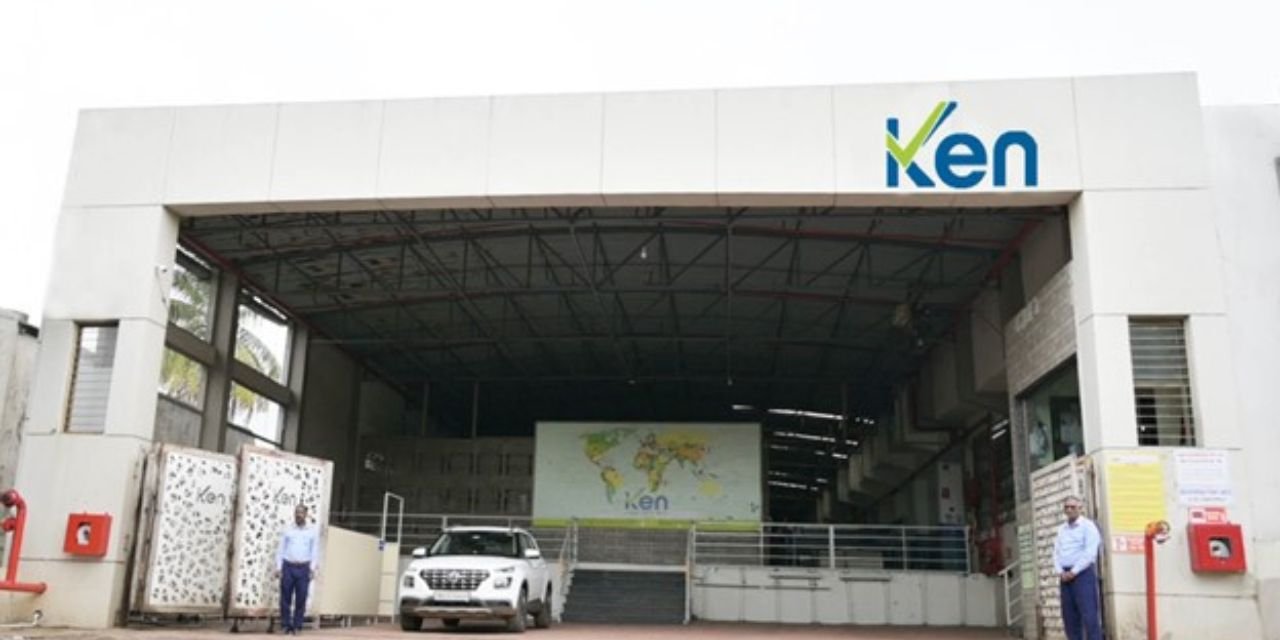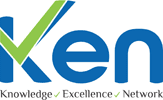
Mr Nikunj Hariprasad Bagdiya
Managing Director, Ken Enterprises Limited
From its establishment in 1998, Ken Enterprises has grown into a textile manufacturer exporting to over 10 countries and has been recognised for its innovation and commitment to quality. The company’s journey is marked by a dedication to delivering high-quality, sustainable fabrics to renowned global brands like ZARA, Target, and Primark. Ken Enterprises is now launching its IPO, which is a defining moment in its journey. The IPO opens for subscription on February 5, 2025, and closes on February 7, 2025, with the IPO price fixed at ₹94 per share.
The TVC Media Team had the opportunity to sit down with Mr Nikunj Hariprasad Bagdiya, the Managing Director at Ken Enterprises Limited, to discuss this journey. His leadership has been instrumental in the company’s growth25. Under his guidance, Ken Enterprises has garnered recognition, including TEXPROCIL awards for export performance and employment generation
Company Background and Founding
Can you describe the founding vision of Ken Enterprises?
Ken Enterprises was founded with the aim of providing a single-point sourcing solution for customers. Initially, we focused on interlining fabrics, later expanding into industrial fabrics for coating and eventually transitioning into apparel, with a strong emphasis on sustainability. While our target markets have evolved with our growth, our core ethos has remained consistent—building products and business strategies around the customer.
What were some of the initial challenges faced when starting the company in 1998?
The textile industry is deeply traditional, with people working in the sector holding conventional mindsets. One of the biggest challenges we faced was shifting these perspectives—both within our own team and among our customers—to adapt to changing business dynamics.
How did your textile background shape your approach to building Ken Enterprises?
My background in textile engineering enabled me to approach every challenge with a technical perspective. Being a second-generation entrepreneur in the industry also provided valuable insights into business operations, industry practices and the value of relationships. These two factors combined allowed me to gain hands-on experience across all functions—operations, quality assurance, marketing, and finance.
Growth and Development
What key milestones have marked the growth of Ken Enterprises over the years?
A major milestone was the 2013 airjet weaving plant, enabling entry into the export market in 2014, and expanding exports to nearly 20 countries. Sustainability compliances were adopted in 2016, and the 2020 pandemic shifted focus towards resilience, value addition, and design. The most notable milestone of all: going public in 2025.
How has the company adapted to changes in the textile industry since its establishment?
Evolving from shuttle looms to state-of-the-art air-jet weaving, complemented by in-house sampling and development, we’ve diversified from traditional to fashion and sustainable fabrics. We pride ourselves on leading transformation, not just following it.
What key partnerships or collaborations have fueled your growth?
Our growth has been significantly influenced by two key partnerships. The first was with our channel partner, who helped us build our export business starting in 2014. The second was with a reputed large-scale apparel exporter who provided insights into their pain points, enabling us to transform our approach and become an invaluable part of their supply chain.
Business Model and Operations


How does your asset-light model enhance operational efficiency?
Being integrated into the Ichalkaranji manufacturing ecosystem offers immense advantages—provided we understand the manufacturers’ psychology, navigate challenges, and align our operations with the region’s vast manufacturing capabilities. Recognising this early, we chose to avoid a capital-intensive expansion model and instead leverage existing infrastructure to our benefit. This strategic decision allowed us to develop an efficient asset-light business model, enabling a stronger focus on customer-centric operations.
How do you ensure quality standards while working with third-party manufacturers?
We have implemented standardised QA norms across all product categories and conduct ongoing training programs for both our internal QA team and partner manufacturers. To maintain strict, zero-tolerance adherence to quality standards, our in-house team manages 100% of the quality assurance process. Additionally, fostering a sense of pride in workmanship has been a core element of our company culture, ensuring high-quality output at every stage.
What role does innovation play in your product development process?
Innovation is at the core of our design and product development process. It extends beyond designers, involving end-users and operational teams across multiple levels to contribute ideas for improved and novel designs. This collaborative approach ensures that our products stay ahead in terms of functionality, aesthetics, and market relevance.
Financial Performance
Can you share insights on the financial growth of Ken Enterprises leading up to the IPO?
Ken Enterprises has demonstrated steady financial growth across key metrics over the past four years, even during the challenges of COVID-19. Remarkably, we have maintained profitability without a single year of negative bottom-line performance in the last 15+ years. Our PAT percentage has consistently improved, rising from 0.67% to over 2.2% in FY24, while our debt-equity ratio has significantly declined from 0.25 to below 0.03 as of November 2024.
How have you driven consistent revenue growth?
Our revenue growth has been driven by a balanced strategy, with over 85% of business coming from repeat customers and 15% from new acquisitions. A major opportunity lies in expanding our share within the existing customer base, as we currently handle only a fraction of their total business. Additionally, securing international brand nominations has been instrumental in driving further growth.
How do you measure success in terms of profitability and market presence?
Profitability is fundamental to both business success and long-term sustainability. Our strategy prioritises profitability, with customer satisfaction serving as the key driver to achieve it. Market presence naturally follows when customers receive exceptional service. In the textile industry, word-of-mouth referrals and organic publicity remain the most effective tools for expanding our market footprint.
What motivated Ken Enterprises to pursue an IPO at this stage of its journey?
Over the past decade, we have structured Ken Enterprises professionally, aiming to elevate it into a significant industry player. Securing external capital became a necessary step to accelerate this journey, unlocking new growth opportunities aligned with our broader vision.
How do you plan to utilise the funds raised through the IPO?
The funds from the IPO will be strategically allocated toward working capital, investment in high-value fabric production machinery, and strategic initiatives for forward and backward integration to enhance operational efficiency.
What are your expectations for investor interest in the upcoming IPO?
Investor response has been positive so far, and we anticipate continued support as we embark on this exciting growth journey.
Future Aspirations
What is your vision for Ken Enterprises over the next decade, particularly post-IPO?
Our aim is to establish Ken Enterprises as a leading name in the textile industry, evolving from an SME to a large, respected corporate entity. Beyond fabrics, we are actively exploring high-impact segments and will unveil our roadmap in due course.
What are your key growth strategies to achieve the 2030 target?
We plan to achieve this milestone by expanding our customer base, strengthening our geographical reach, diversifying our product portfolio, and enhancing product development capabilities. Additionally, introducing a new finished fabric segment will contribute to both revenue growth and profitability.
What initiatives are being taken to enhance sustainability within your operations?
Sustainability is a long-term commitment, and we have already implemented several measures, including renewable energy usage and water recycling. Moving forward, we will continue refining our processes to further enhance environmental responsibility across our operations.
Leadership and Company Culture
How would you describe the company culture at Ken Enterprises?
At Ken Enterprises, our culture is built on two core pillars—People and Performance. We maintain a strong balance where employee well-being and operational excellence go hand in hand, ensuring sustainable growth.
What leadership principles guide your decision-making as Managing Director?
Our leadership is guided by 13 core principles, three of which align with our name—KEN. Knowledge emphasises continuous upskilling, Excellence drives high standards in every action, and Network fosters strong partnerships across the industry.
Conclusion
What’s your elevator pitch to investors about Ken Enterprises?
Over the past two decades, we have built a strong foundation, and our journey is far from over. By leveraging India’s strengths and serving both domestic and global markets, we are poised for long-term growth. Our strategy remains focused on understanding macro trends while executing with precision at the micro level, ensuring sustained success.


